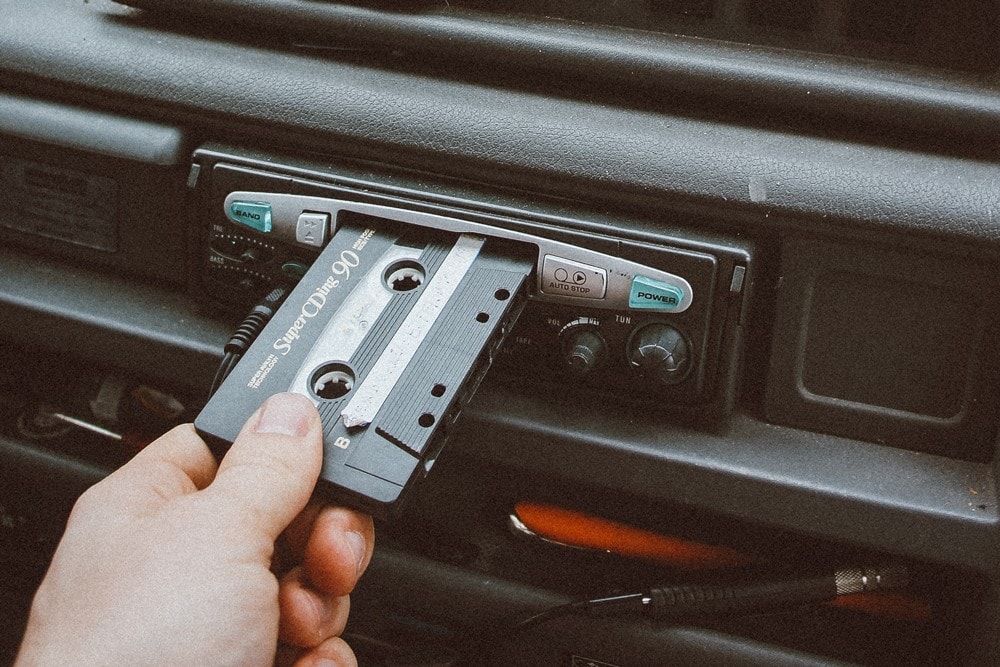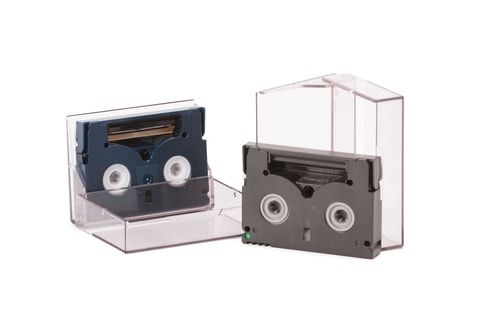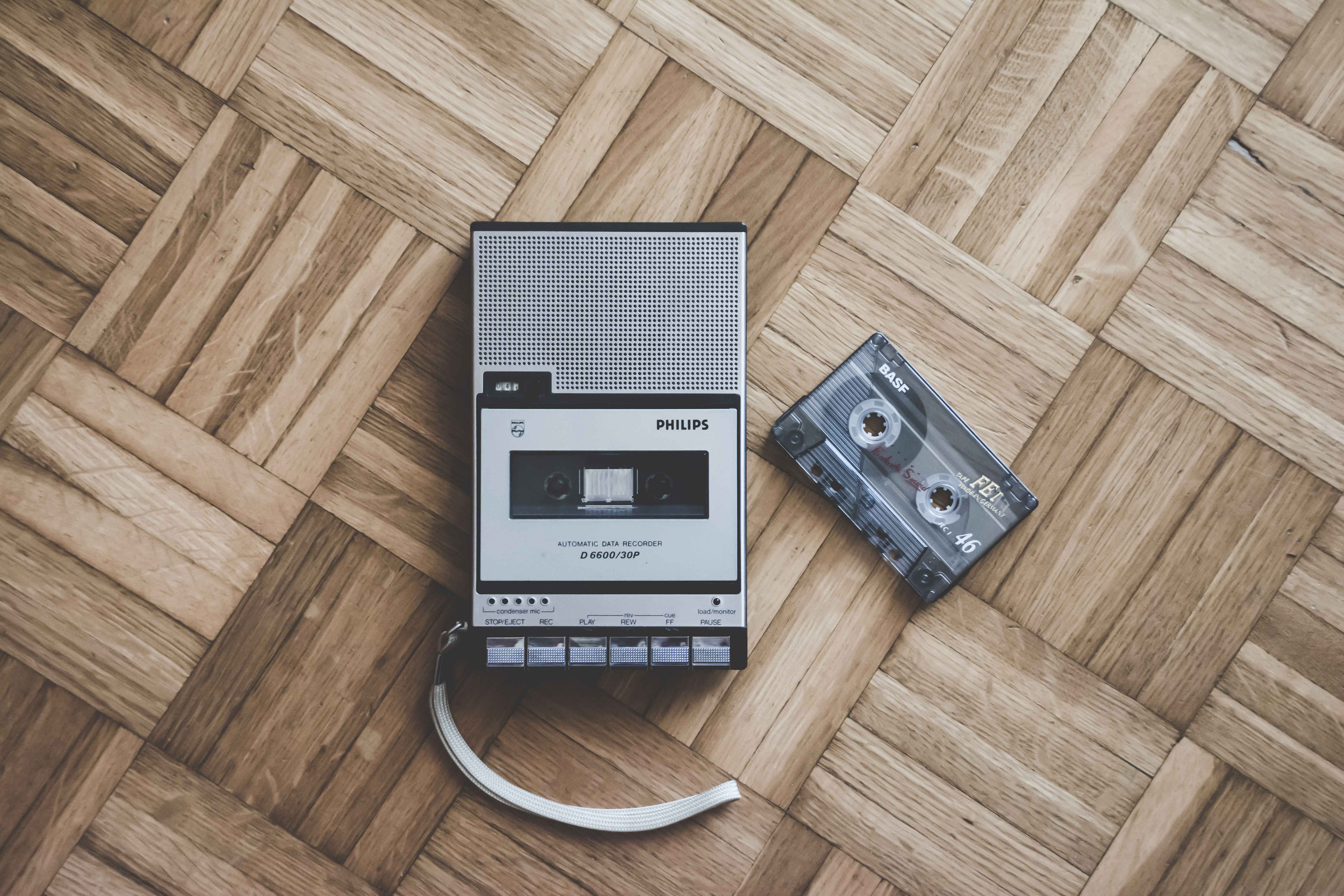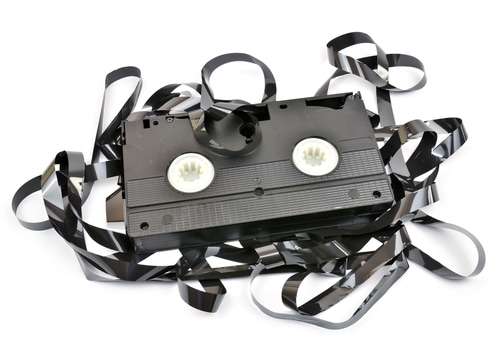The audio cassette has many different names: Cassette, Compact Cassette (CC) as well as Music Cassette (MusiCassette, MC). The audio cassette is a sound carrier for recording and playback. This is done via a cassette player. The magnetic tape is held inside a protective plastic case.

1935: The start: AEG develops the “magnetophone” tape recorder
The “magnetophone” device was based on the same technology of the later audio cassette. However, it was extremely complicated to operate and quite expensive to purchase. Thus, it was used especially by professional media companies, such as in recording studios or radio. For the masses, the magnetophone was initially uninteresting. From 1950 onwards, however, prices dropped to around 700 and 1,500 DM. As a result, from 1960 onwards almost every household was equipped with a reel-to-reel tape recorder.
1961: The birth of the compact cassette
 From 1961 onwards, the Dutch company Philips started to create a smaller and more budget friendly cassette for home use. The tape was narrowed to 3.8mm. The developer Lou Ottens was very interested in the design of the audio cassette, he made a piece of wood that would fit in the pocket of his jacket: the Compact Cassette was born. The dimensions of the compact cassette are 10.16×6.35×1.27cm.
From 1961 onwards, the Dutch company Philips started to create a smaller and more budget friendly cassette for home use. The tape was narrowed to 3.8mm. The developer Lou Ottens was very interested in the design of the audio cassette, he made a piece of wood that would fit in the pocket of his jacket: the Compact Cassette was born. The dimensions of the compact cassette are 10.16×6.35×1.27cm.
On 28 August 1963, the time had come and Philips presented its products at the Great German Radio Exhibition: The compact cassette and the corresponding cassette recorder “Philips EL 3300”. It cost 299 DM and was battery-operated.
1970: Success of the compact cassette through internationalisation
After Philips’ presentation, many Japanese electronics companies began to imitate the products. To counteract this, Philips negotiated licensing terms with the then Sony boss Noria Ohga. The result: Philips granted the licence to Sony free of charge, but insisted on international standardisation. The result was that in a very short amount of time, different companies all over the world released cassette recorders and cassettes.
People were super excited about the new technology. It had never been so easy and cheap to record your favourite songs from the radio. You could create great mixtapes yourself and pass them on to friends. From 1970 to 1990, the audio cassette enjoyed enormous popularity alongside the vinyl record and the CD.
The History of the Audio Cassette: Major milestones
- Noise reduction: In 1968, Dolby B noise reduction was introduced for compact cassettes. This reduced disturbing tape noise.
- Car radio including cassette player: In 1968, Philips launched the car radio with playback function for cassettes.
- The Walkman: Sony introduced the first Walkman in 1979. The portable cassette player was especially popular with young people and was considered a status symbol.

Present situation of the audio cassette
Nowadays, the cassette has been largely replaced by digital media. Cassette recorders disappeared from households in the early 2000s, and the mixtapes that had been put together with a lot of effort moved into boxes, into the attic or into the cellar.
In 2009, there were still three million cassettes sold in Germany. In comparison to the 78 million cassettes sold in 1991 that number is very small. The production of cassette tapes and blank cassettes in Germany was already stopped in 2003, when the EMTEC Magnetis Group went bankrupt. The Dutch company Oosterhout, which took over production by example of the EMTEC group, had to cease production in 2012. The Indonesian company Pangguna is now the world’s largest manufacturer of blank cassettes. In Germany, recorded compact cassettes can still be found in some cars and children’s rooms. They still have a fanbase because of their sturdiness. Children’s cassette recorders continue to be sold.
The disadvantages of the audio cassette
 Tape jam: The magnetic tape of the cassette can come loose, what results in the infamous tape jam. Anyone over the age of 25 years should still be familiar with this disaster. Tape jam is caused by defective players or by the ageing of the rubber rollers or rubber belts within the cassette and makes it difficult to save the tape.
Tape jam: The magnetic tape of the cassette can come loose, what results in the infamous tape jam. Anyone over the age of 25 years should still be familiar with this disaster. Tape jam is caused by defective players or by the ageing of the rubber rollers or rubber belts within the cassette and makes it difficult to save the tape.- The sound: When new, the sound of cassettes is not bad, quite the contrary. But over time, they lose quality. Mostly due to wear and tear or the magnetisation of the sound head.
- Drop-outs: Drop-outs increase due to wear, tape dust and abrasion of the audio tapes..
- Time-consuming: Rewinding and fast-forwarding to one’s favourite song can be very annoying and time-consuming, depending on the length of the audio cassette.
MEDIAFIX saves your audio cassettes
Are you generation mixtape? If so, your audio cassettes are probably piling up in the garage, attic or cellar. Do you have any ideas how old and in what condition your cassettes are? It’s time to act!
MEDIAFIX digitises your cassettes for as little as £5.99 per piece, including storage as MP3 files. This way you can play your old music cassettes anywhere on your smartphone. If you wish, we can also transfer your cassettes to audio CDs.
- Personal consultation
- Simple processing & all-round service
- Best-price-guarantee
- Additional services available
Do you have any questions? Our customer service will gladly give you advice.
Simply call us 020 3904438-0
Our phone hours:
Mon-Fri 10.00 a.m. - 3.00 p.m.



